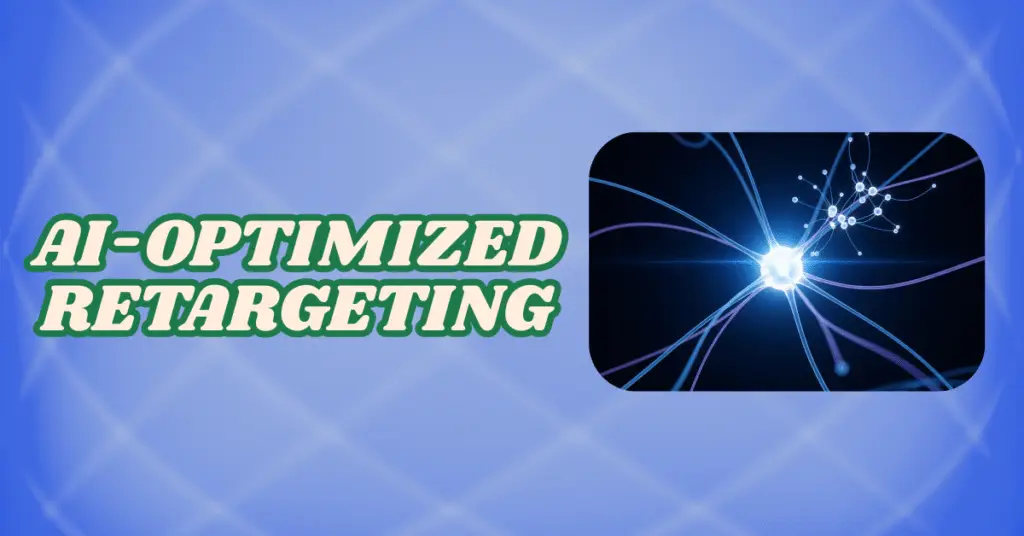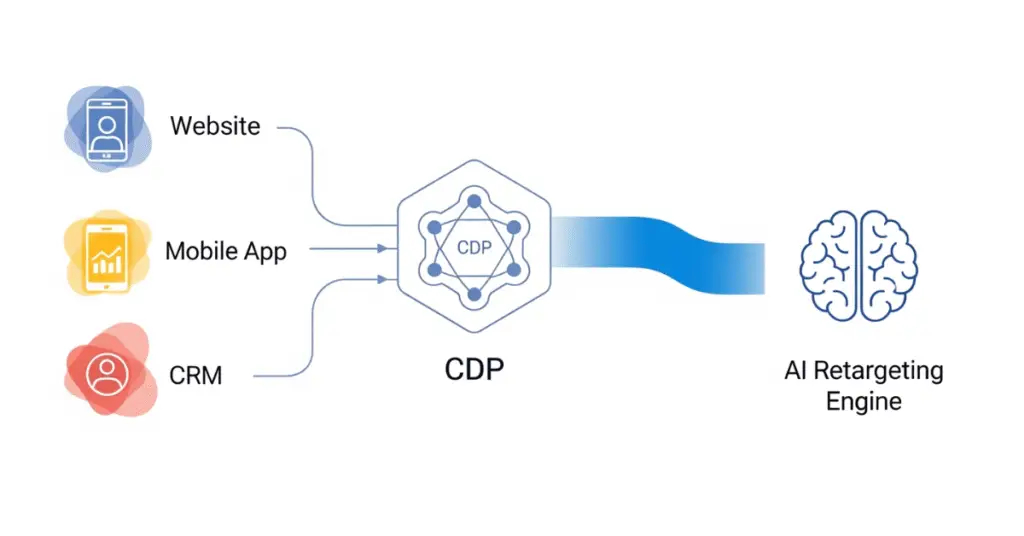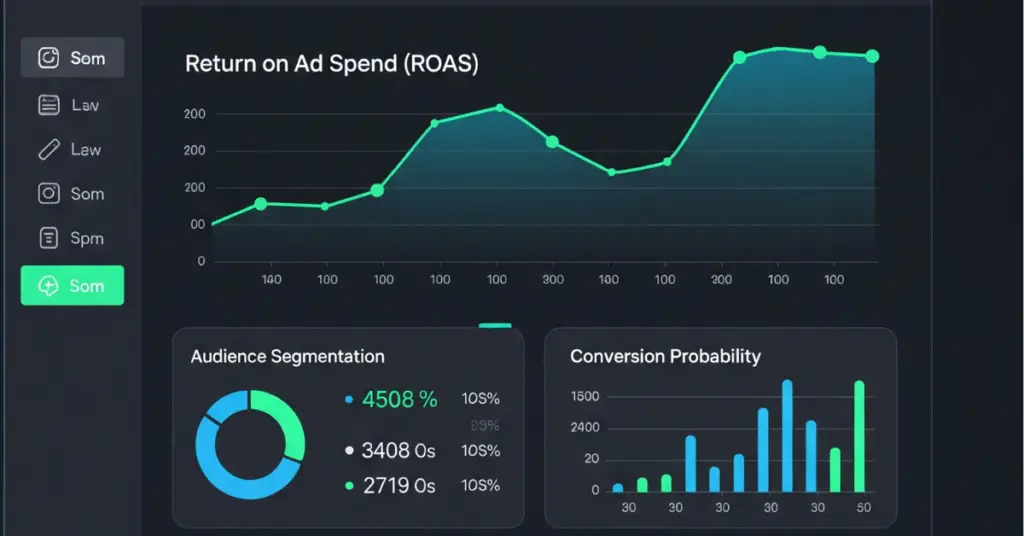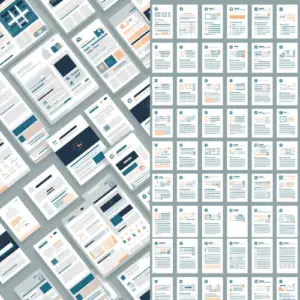
Your retargeting campaigns are running, budgets are being spent, and ads are being served. But are they working as hard as they could be? Many marketers are starting to notice a plateau. Traditional retargeting still works—but it works the same for everyone, often treating a casual visitor the same as someone ready to buy. That’s beginning to change. Smarter, AI-driven approaches to retargeting (AI-Optimized retargeting) are making it easier to prioritize the people most likely to convert—without completely overhauling your strategy. It’s not about replacing what works, but improving how it works.
Instead of reacting to every site visit the same way, AI-optimized retargeting lets you shift toward more precise, more timely engagement—helping you spend more efficiently and connect when it counts. It’s not the future; it’s starting to happen now.
The Limitations of Traditional Retargeting Logic
For years, retargeting has operated on a simple quid pro quo: a user visits a page, they see an ad. This rule-based approach was effective, but it’s a blunt instrument in a world that demands precision. The limitations, highlight why AI-optimized retargeting is climbing up as the need of the hour; as its core limitations are now a significant drag on performance and budget:
- Uniform Messaging: It treats a user who spent 10 minutes comparing product features the same as someone who bounced in seconds.
- Static Timing: It serves ads for a fixed duration (e.g., 30 days) without knowing if the user is even in a buying mindset.
- Manual Optimization: It relies on marketing teams to manually analyze data, segment audiences, and A/B test creatives—a slow process that can’t keep pace with real-time user behavior.
This inefficiency leads to ad fatigue, wasted spend on low-intent users, and missed opportunities with high-value prospects.
How AI Transforms Re-engagement into a Science
AI-optimized retargeting dismantles the old rule-based framework and replaces it with a dynamic, learning system. By analyzing vast datasets, machine learning models don’t just see what a user did; they predict what they are likely to do next.
Predictive Audience Segmentation – AI-Optimized Retargeting
Instead of broad buckets like “website visitors” or “cart abandoners,” AI builds granular, behavior-based audiences in real-time. It identifies patterns that signal intent, creating segments like:
- “High-Intent Researchers”: Users who have viewed multiple products and spent significant time on-page.
- “Price-Sensitive Scanners”: Visitors who focus on sales pages or use comparison tools.
- “Nurture-Ready Prospects”: Individuals who downloaded a resource but haven’t returned.
Dynamic Creative & Channel Orchestration
AI-optimized retargeting takes A/B testing to a new level with Dynamic Creative Optimization (DCO). The system automatically mixes and matches headlines, images, and CTAs to find the perfect combination for each user segment. Furthermore, it orchestrates this across channels, ensuring a consistent and compelling experience whether the user is on social media, checking email, or browse a news site.
Intelligent Budgeting and Bidding
Perhaps the most significant impact of AI-optimized retargeting is on your budget. AI-powered bidding algorithms analyze conversion probability for every single ad impression. This means your budget is automatically allocated toward the users and placements most likely to drive results, drastically improving your Return on Ad Spend (ROAS) by cutting waste.
But this predictive power is only as good as the data it receives, which is why its integration into your core Martech stack is critical.
Integrating AI-optimized Retargeting with Your CDP
AI-optimized retargeting doesn’t exist in a vacuum. Its true power is unlocked when it’s fed high-quality, unified data from a central source like a Customer Data Platform (CDP).

- The Power of First-Party Data: Connecting to a CDP to AI-optimized retargeting allows the AI to leverage rich first-party data—like purchase history, support ticket status, and loyalty program activity—that a simple website pixel cannot see. This creates an incredibly detailed profile for more accurate predictions.
- Unifying Customer Signals: A CDP unifies online behavior (website visits) with offline data (in-store purchases or event attendance), feeding the AI a truly holistic customer view. This enables you to retarget a user who saw a product in-store but didn’t buy.
- Triggering Intelligent Journeys: With a CDP, you can build granular segments (e.g., “high-value customers at risk of churn”) that automatically trigger a specific, nuanced retargeting journey designed to retain them. This creates a seamless link between your data strategy and advertising execution.
With a foundation of rich, first-party data, you’re also perfectly positioned to tackle the next major industry disruption: the end of the third-party cookie.
AI-optimized Retargeting in a Cookie-less World
The phase-out of third-party cookies is rendering much of traditional retargeting obsolete. AI-powered strategies, especially those built on a CDP, are the solution to this challenge.
- Shifting from Identity to Intent: AI helps pivot from relying on individual cookies to interpreting thousands of other signals, including contextual data (the topic of the page a user is on), device type, and on-site engagement patterns to predict intent.
- Leveraging Consented, Anonymized Data: In a cookieless world, first-party data is king. AI can use consented, privacy-compliant identifiers like hashed email addresses to effectively reach users across platforms without relying on cookies.
- Contextual Intelligence: Instead of following a user with cookies, AI can serve a relevant ad based on the content they are consuming in that exact moment. This makes the ad timely and helpful, not intrusive.
Operating effectively in this new landscape requires not just new technology, but new ways of measuring success.
Beyond ROAS: Measuring the True Lift of Intelligent Retargeting
Marketing leaders are constantly asked to prove their impact. An AI-driven approach provides the tools to demonstrate value far beyond simple Return on Ad Spend (ROAS).

- Incremental Lift and Holdout Groups: True AI platforms can run controlled experiments by creating a “holdout group”—a small audience of users who are intentionally not shown ads. By comparing the conversion rates of the targeted group to the holdout group, you can scientifically measure the true “lift” and incremental revenue generated by your campaigns.
- AI-Powered Attribution: Machine learning is revolutionizing attribution. It can analyze countless conversion paths to more accurately assign credit across multiple touchpoints, finally proving the value of retargeting efforts that influence a customer early in their journey.
- Measuring Impact on Customer Lifetime Value (CLV): The goal isn’t just one more sale. By personalizing offers and messaging, AI-powered retargeting can reactivate dormant customers and increase repeat purchases, measurably improving overall CLV.
Key Considerations for Implementation
Transitioning to an AI-optimized model requires a strategic approach.
- Start with High-Quality Data: As emphasized, AI is only as powerful as its data. Ensure your tracking is clean and your CDP is well-maintained.
- Set Clear, Measurable Objectives: Define success using the advanced metrics above: aim for a specific incremental lift, a reduction in cost per acquisition (CPA), or an increase in CLV.
- Fuel the System with Great Creative: AI handles the mechanical optimization, but human creativity remains essential. Your team’s role shifts from manual tweaking to providing high-quality creative assets for the AI to test and deploy.
- Embrace an ‘Always-On’ Optimization Mindset: AI continuously learns and adapts. Marketers must monitor performance holistically to provide strategic direction and interpret the “why” behind the data.
Conclusion: Start Planning the Strategic Leap
The ambition for any marketing team is straightforward: re-engage lost customers and ensure every dollar of ad spend contributes directly to revenue and loyalty. It’s the core objective that drives our daily efforts.
Yet, continuing to rely on outdated, rule-based retargeting actively works against this ambition. It’s a strategy that leaves money on the table, frustrates potential customers with irrelevant ads, and fails to distinguish casual browsers from your most valuable prospects.
This is precisely why a strategic leap to an AI-optimized approach has become a requirement for success in modern digital advertising. By leveraging predictive analytics, CDP integration, and advanced measurement, you can move beyond these limitations. It allows you to finally deliver the kind of personalization at scale that turns potential into profit, ensuring the right message reaches the right user at the perfect time. The question isn’t if AI will transform retargeting, but how quickly you can harness its power to gain a competitive edge. If you’re ready to move from basic rules to intelligent revenue growth, the team at 4thought Marketing can help you build the data foundation and strategic framework for success.





